
- Planning A Trip To Vietnam (And Maybe Beyond)
- Introduction: Vietnam, Laos, & Cambodia
- Review: Park Hyatt Saigon
- Cu Chi Tunnels: What You Need To Know About Visiting These Vietnam War Sites
- Nam Nghi Phu Quoc Review (A Hyatt Unbound Collection Property)
- Airbnb Review: Orchid House Hoi An
- Visiting Hoi An, Vietnam: Delightfully Touristy (No, Really!)
- Review: Hilton Hanoi Opera Hotel
- Visiting Hanoi, Vietnam: 6 Things I Loved (And You Might Too)
- Review: Song Hong Business Lounge Hanoi Airport (Priority Pass)
- Lao Airlines ATR 72 Hanoi To Luang Prabang
- Review: Satri House Hotel Luang Prabang
- Visiting Luang Prabang, Laos: Social Responsibility In A Tourist Mecca
- Applying For A Cambodia E-Visa With A US Passport
- Review: Park Hyatt Siem Reap
- Angkor: Practical Tips For Visiting The Ancient City
- Cambodia Angkor Air ATR 72 Siem Reap To Phnom Penh
- Phnom Penh, Cambodia: I’m In Love
- Raffles Hotel Le Royal Phnom Penh Review
Let’s start this off with an unpopular opinion that I’m probably going to regret sharing:
While Satri House felt like the hotel you’d obviously stay at when disembarking from The Jungle Cruise, that paled in comparison to the Adventureland-without-the-Dole-Whip vibes permeating the town of Luang Prabang.
I’m sorry. I know Luang Prabang is revered in some circles as a magical gem of a place — a haven in the chaos of Southeast Asia, with fantastic cuisine, great hotels, and an approachable Night Market.
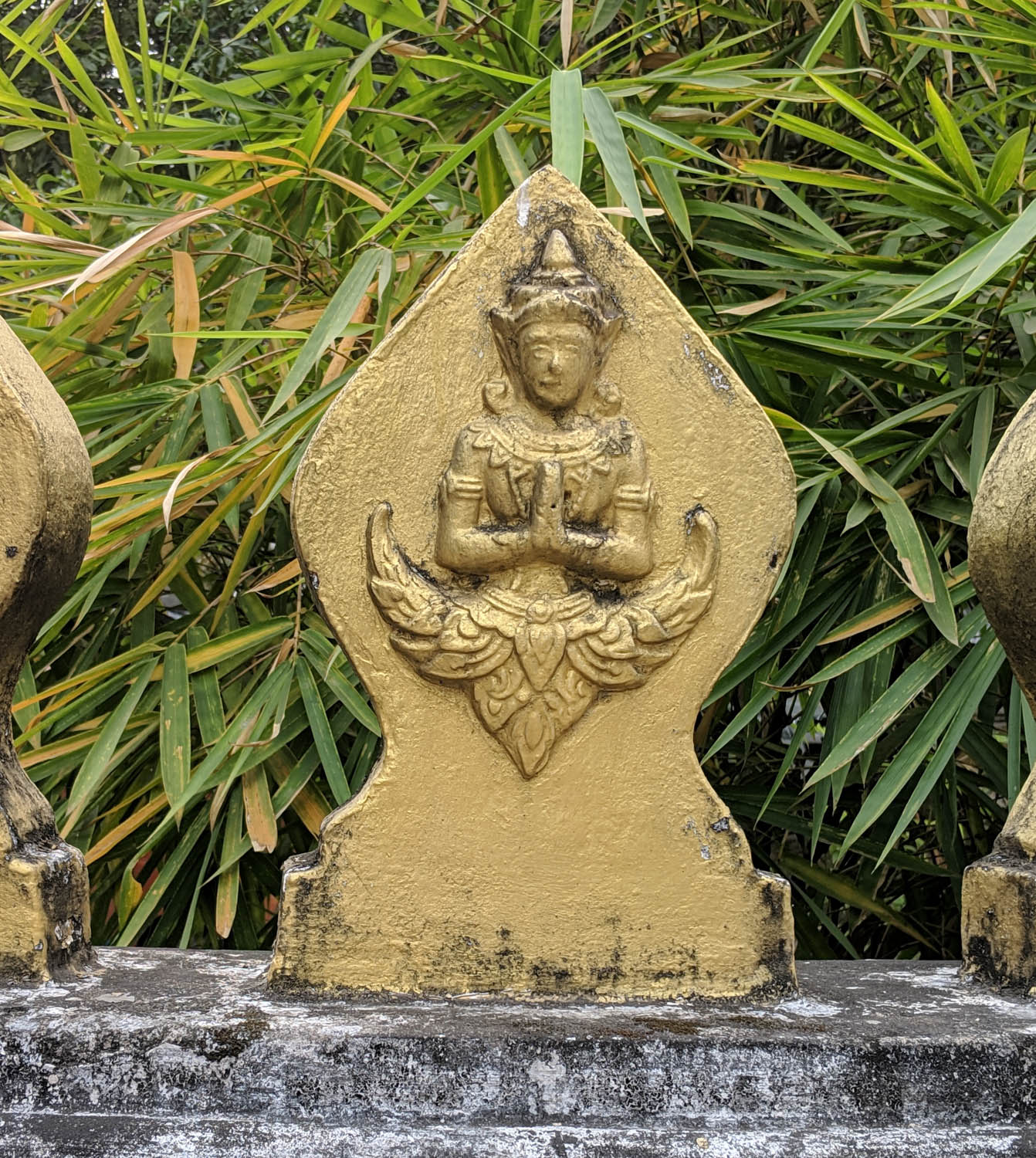
And it certainly is all those things. But that may be partly because (at least on the surface) Luang Prabang feels sterile and packaged; a Disneyfied manifestation of what some people expect Asia to be, at the expense of what the place truly is.
To be clear — we ended up loving our time in Laos; the people we met were lovely and kind, and the natural beauty is breathtaking.

Particularly when you get out of town and into the more rural villages, the uniqueness of Laos and the warmness of the people becomes apparent. It’s a beautiful place, with wonderful people.
But there are some major issues with the tourism industry in Luang Prabang. As my dear friend Stefan summarized quite perfectly:
Luang Prabang has become a tourism focal point well beyond the capacity of the town’s natural footprint.
So I think it’s irresponsible to be all “Woo! Visit Laos! Wear your perfectly-crumpled linen and straw fedoras while sipping cocktails on a terrace overlooking a town that invokes images of yesteryear!” without also addressing some of the challenges the town is having.
I don’t say this to discourage anyone from visiting Laos, or from enjoying the relaxed pace of Luang Prabang. It’s just that while I always try to be thoughtful in my travels, the time we spent in Luang Prabang shone a spotlight on why these efforts matter, and the consequences of unchecked tourism.
Irresponsible tourism is harming the religious traditions of Luang Prabang
Our first morning (and against the recommendation of the hosts at our hotel, who warned us it was “no longer nice”) we took a pre-dawn bicycle ride to the center of town, to catch a glimpse of the centuries-old alms giving processional.
Recognizing that our interest in seeing this aspect of the culture in action potentially made us part of the problem, we researched and discussed ahead of time how to observe from a distance in a polite, respectful, and silent way.
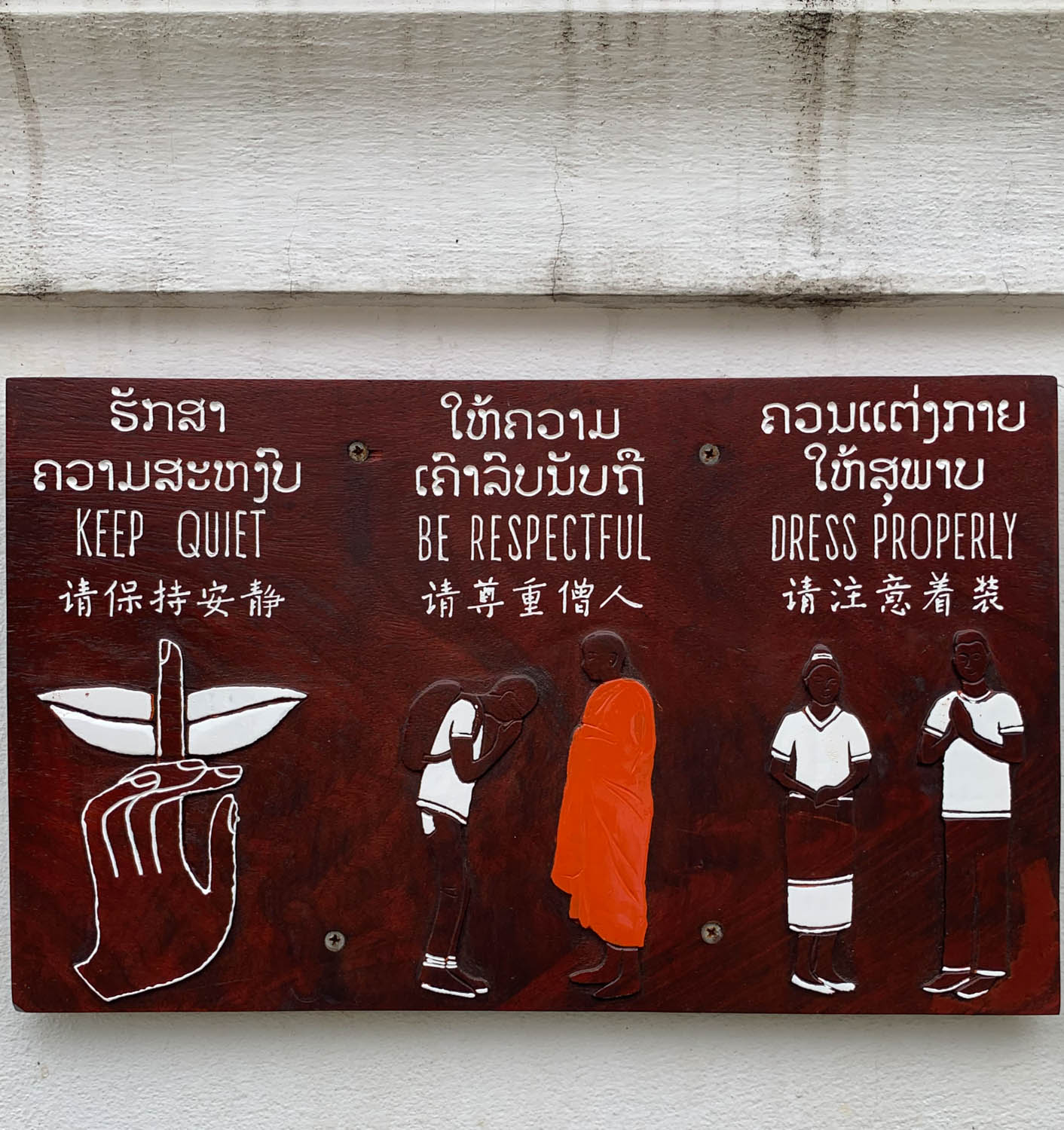
Other people did not make the same efforts, to put it mildly.
We arrived to find the main streets of Luang Prabang lined with plastic chairs, and touts hawking prayer-shawl rentals and food offerings of unknown origin, with some foreign tour guides having gone so far as to set up stand lights so their patrons’ selfies would have better lighting.
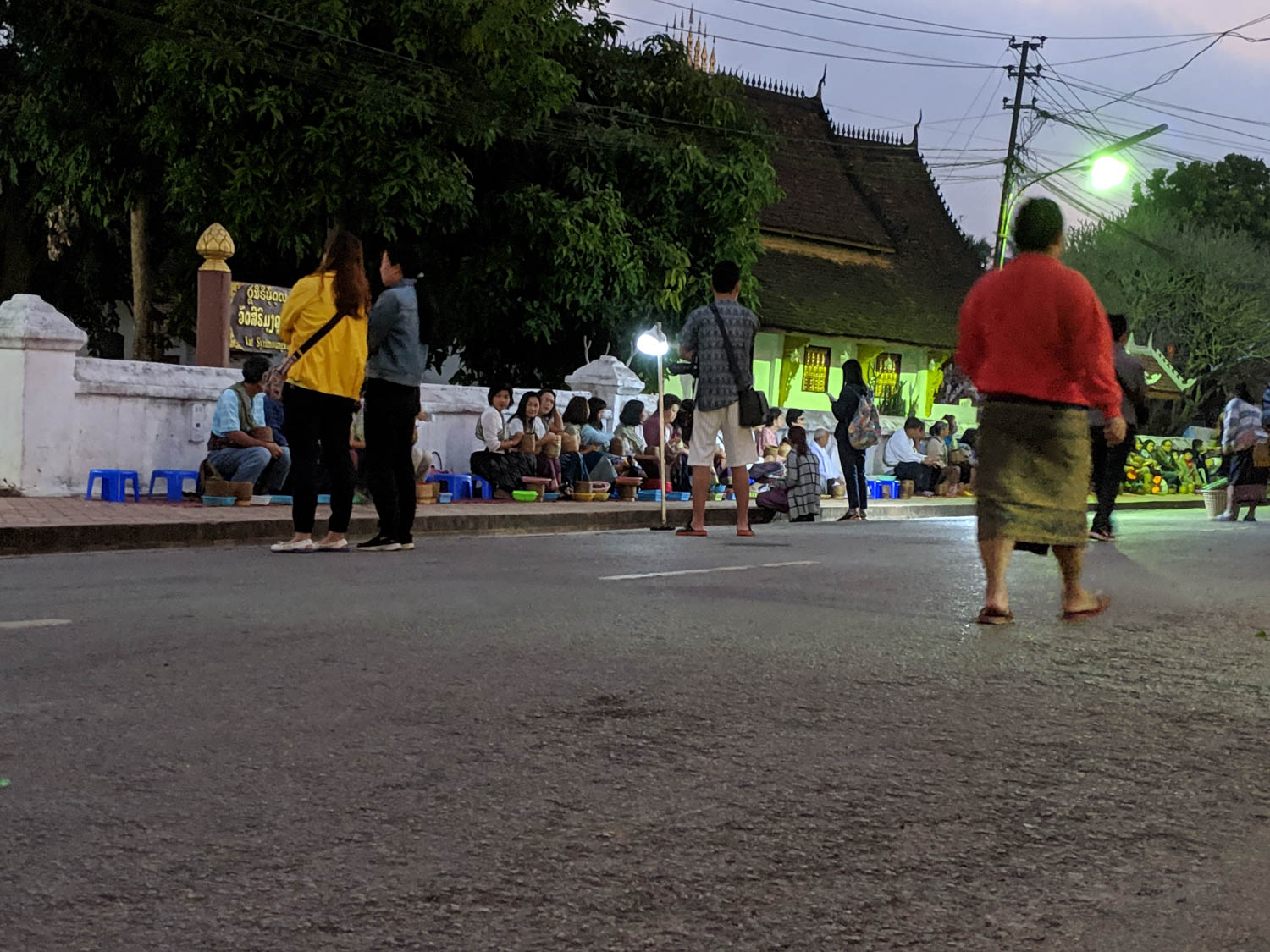
It was revolting.
Laos has had a difficult history. There’s incredible poverty masked by the neatly white-washed buildings of central Luang Prabang. Tourism dollars have a huge impact on the economy, and are needed to improve living standards and educational opportunities.
But the influx of tourists comes at a cost, and in the rush to capitalize on the prosaic tranquility of the town, the social fabric has, perhaps, been damaged. As one local woman we were chatting with bemoaned:
I take food to the temple now. The offerings are part of who we are, but my home is not a zoo.
And based on the sickening displays of selfishness we saw from tour guides, and the corresponding slumped shoulders and thinly-veiled frustration of the monks and novices, I can see why fewer and fewer residents are participating in these ancient traditions.
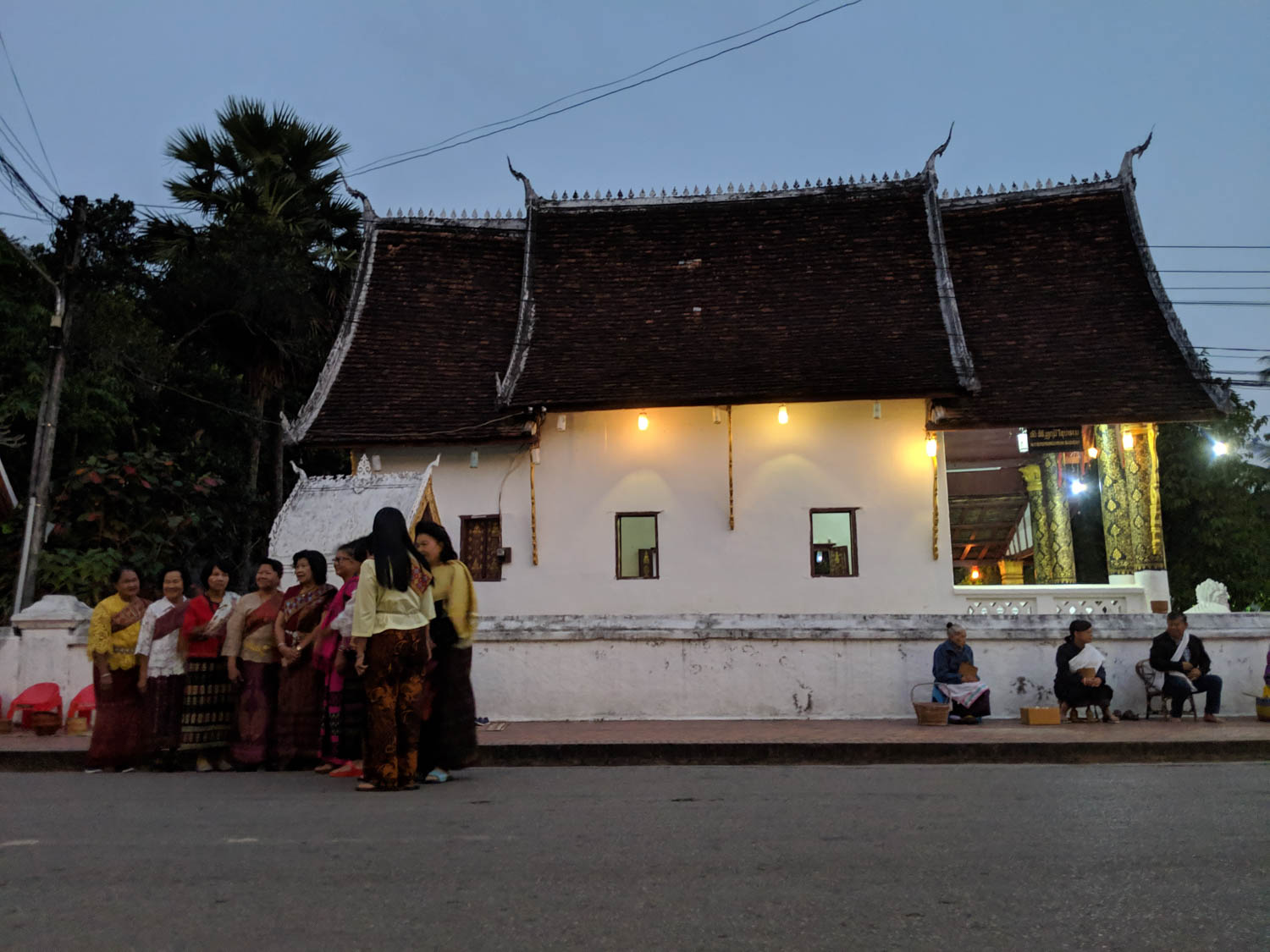
On a positive note, it seems that many other people and organizations recognize the societal challenges that come with rapidly-growing tourism, and efforts are being made to better protect the cultural heritage, educate tourists, and create a more sustainable situation for Luang Prabang.
So in that vein, and if you have similar priorities when you travel, here are some of the more potentially sustainable experiences we enjoyed in Luang Prabang.
I’m not saying these are necessarily the best things to do in Luang Prabang, or that there aren’t other activities that might be more meaningful, or just more enjoyable. But in-between sampling some of the excellent restaurants in town, here are some things that at least made us feel like the dollars we spent were helping, rather than hurting.
1) Visit a monastery with Orange Robe Tours
We didn’t find this group until our last day, but I’d highly recommend a tour here for your first day in Luang Prabang. Really, if the government of Laos were smart, they’d partner with this group to create some (possibly mandatory?) educational materials for people wanting to visit the town.
Orange Robe Tours is a project dedicated to preserving Lao Buddhist culture and supporting former Novices and Monks transition from the temple. Unlike monks in some Western traditions, entering the monastery is something that most Lao Buddhist men do “for a time” — possibly for a short interval during school holidays, or just before they’re married — but even boys who join as novices while children aren’t necessarily making a lifetime commitment.

So there’s a large contingent of young men who are leaving the temple environment at 17 or 18, and are over-educated but under-trained for returning to village life. They generally have learned multiple languages, and could be critical helpers in improving the economic and education situation in Laos, but there isn’t really a support infrastructure there yet.
The idea behind Orange Robe Tours is that these young men who have recently left the temple are some of the best-equipped people in Laos to explain the traditions and values of the culture to visitors. So they offer tours each day to a local temple, dedicating time to learning about the monastery lifestyle, sharing their views on Buddhism, discussing how to visit and participate respectfully, and even guiding tourists through some meditation and mindfulness practices.

The guides are paid for giving the tours, the local temples receive a donation for hosting, and tourists get some meaningful insights that can influence the rest of their time in Laos. It’s an enterprise where everyone benefits.
If you go (and I suggest you do), make time for the combination tour, which has both the cultural visit, and the guided meditation. This was a lovely experience, and created a human connection to the history of Luang Prabang that helped cut through the sterility of the tourist-focused main drag.
2) Hear Lao fables at Garavek
I will admit that I am a sucker for origin stories and mythology in general (I tend to feel that one of the best ways to understand a place is through the art and stories that evolve along with a culture), but even if you’re not a huge fan of that sort of thing, I think you’ll enjoy this.
Besides, it’s ~$5 and 45 minutes.
Folktales and legends of Luang Prabang are told every night (in English) by a local storyteller, accompanied by a traditional musician. The unassuming theater only seats about 25 people, so you’ll want to get there by 6PM to buy your ticket, then go grab a drink or take a walk by the river and come back for the 6:30PM performance.
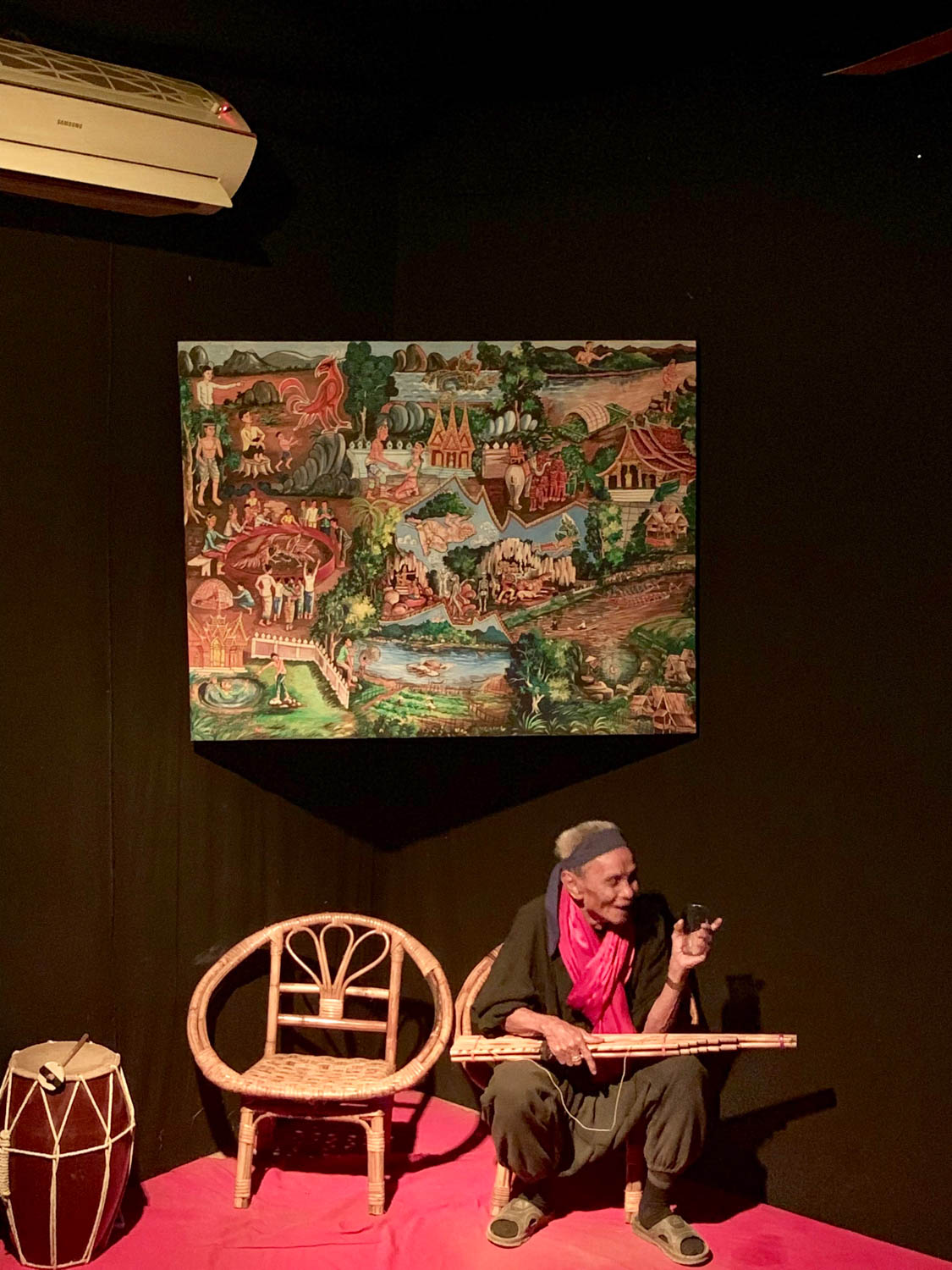
It goes without saying that this isn’t a high-budget production, and if that’s what you’re expecting…well, you’ll have a bad time. Instead it’s a rather intimate and home-grown sharing of some local stories — the storyteller doesn’t have perfectly unaccented English, and the bamboo mouth organ is homemade, and not perfectly tuned.
But that’s what made it such an authentic and enjoyable experience, and attending a performance is a lovely way to help support some of these traditions.
3) Explore the natural landscapes of Laos
Helping to make maintaining natural areas an economically viable option is another one of those situations that can be a win-win (though there is of course a risk of over-tourism here as well), and you don’t have to be a serious trekker to enjoy hiking in the forests around Luang Prabang.

The Kuang Si waterfalls, for example, are only about 30 minutes outside of town by tuk-tuk. Admission to the park is 20,000 kip (~$2.30 USD), and the whole place seemed well cared-for.

We spent a lovely morning here, and it was one of the highlights of our trip.
Tips for visiting Kuang Si falls
To start, I’d think about if you’re wanting to hike (like we did) or swim (which only my mom was brave enough to do, because the water was roughly four degrees below frigid), or are there for photography purposes.
Hikers and nature photographers may want to arrive earlier in the day, before the crowds drop in for waterfall selfies, while swimmers may want to wait until the mid-day sun has warmed the pools a bit.
Here’s a map to help:

The grey box labeled with a “4” on the map is the main bridge across the front of the waterfall. This will get very busy as the day progresses, so if you want to just get there as quickly as possible, you can walk up the service road, which is the broad grey path on the map.
If you want to take a short (but somewhat technically challenging) hike, the red pathway labeled “A” to the left of the main waterfall will take you up to the source of the springs.
It’s a beautiful trek, but it is steep, and pretty slippery. The uphill section had stone stairs cut into a smaller channel of water, as an example:

But the views were incredible, and it was neat to be able to look down over the cascading pools:
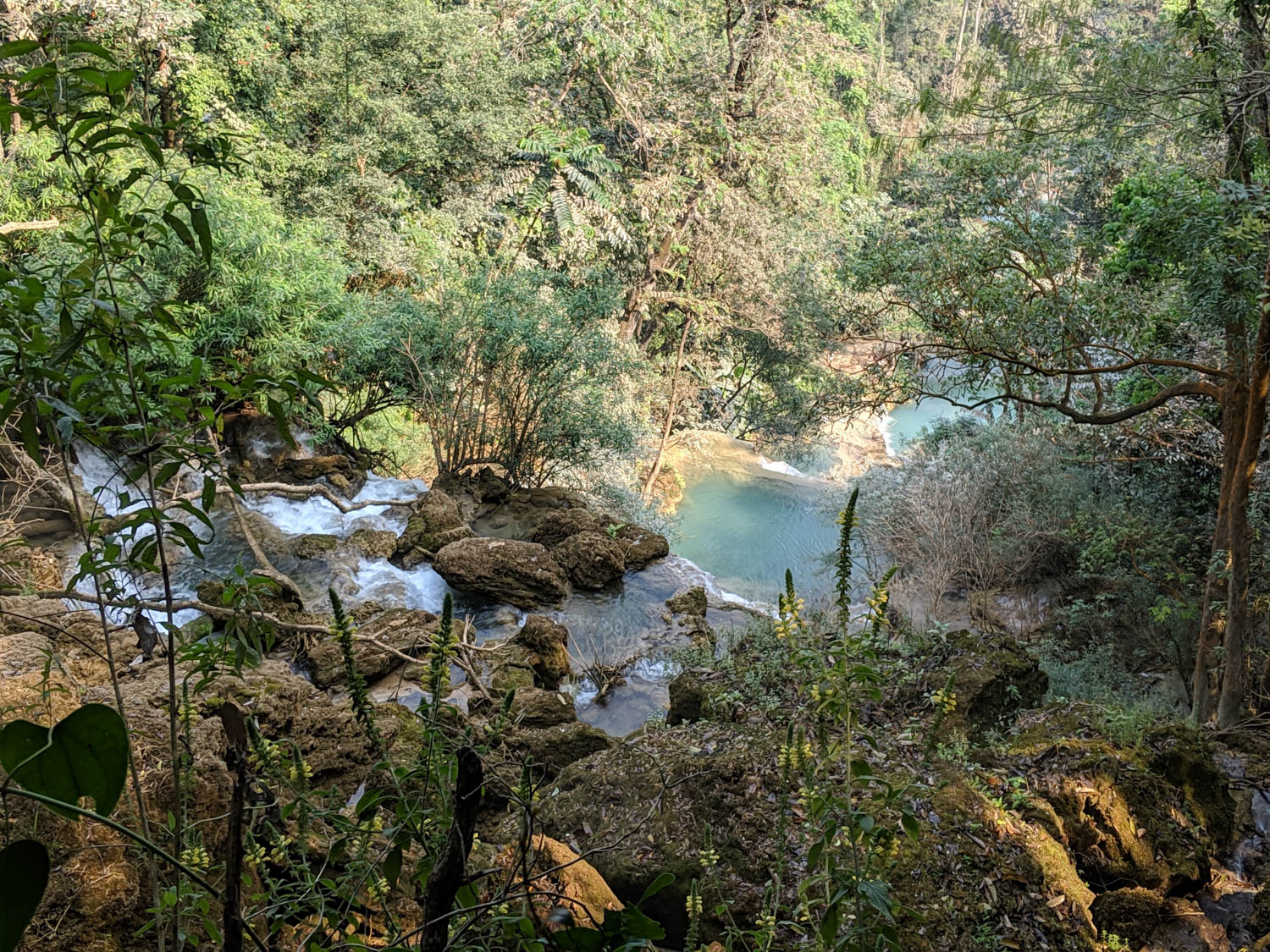
And the forested pools at the top were pretty:
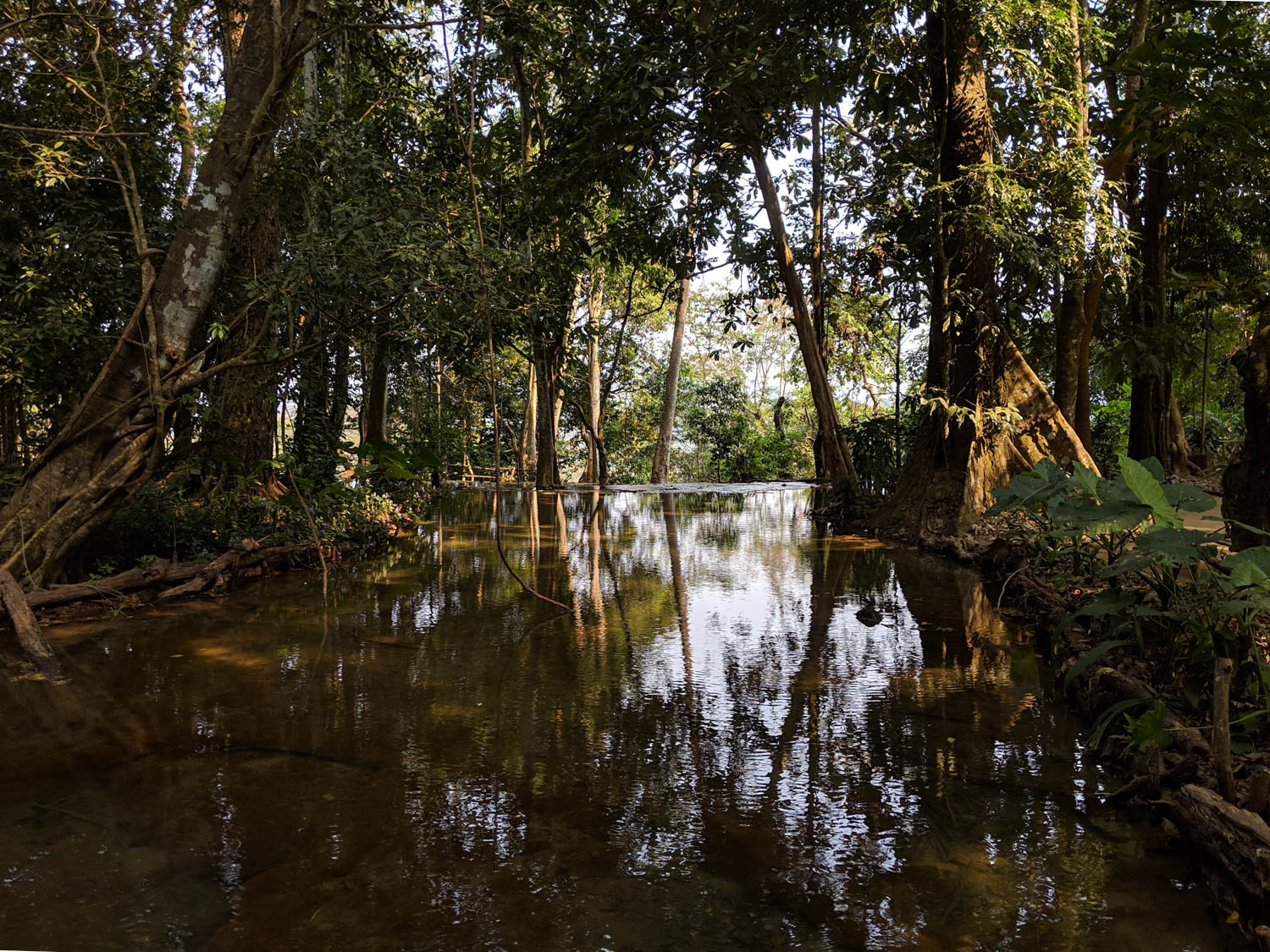
The idea is that all traffic goes clockwise, so everyone should take the path on the left of the falls to go up, and on the right of the falls to go down.

No exaggeration, this pathway is both steep and slippery, and as directional traffic isn’t really enforced, it can be a little complicated in spots.
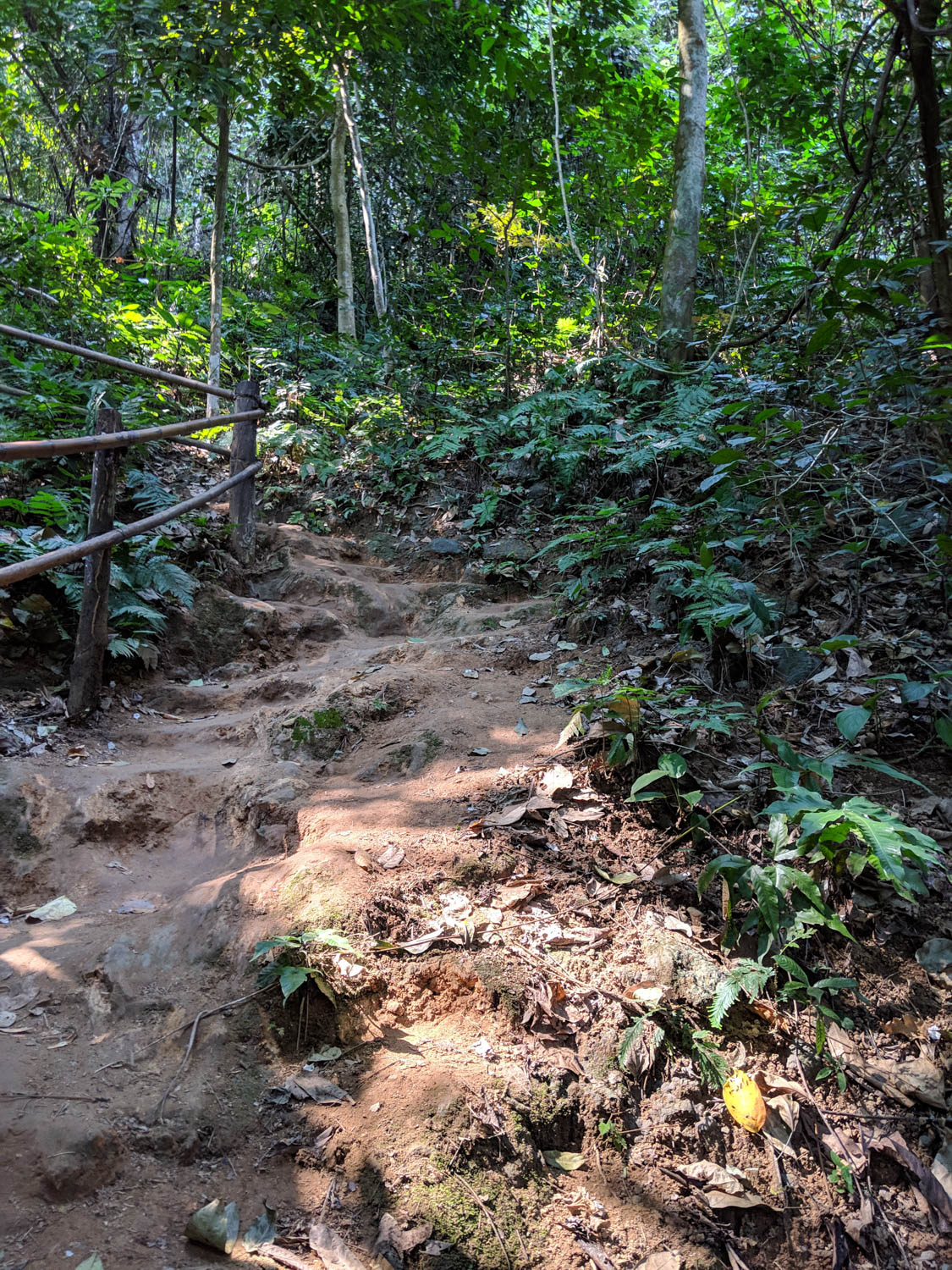
If you’re visiting the falls for the views and to be outside in nature, take the striped yellow and red path. There are several signs along this route describing local trees and plants, plus you get to walk through the bear sanctuary:
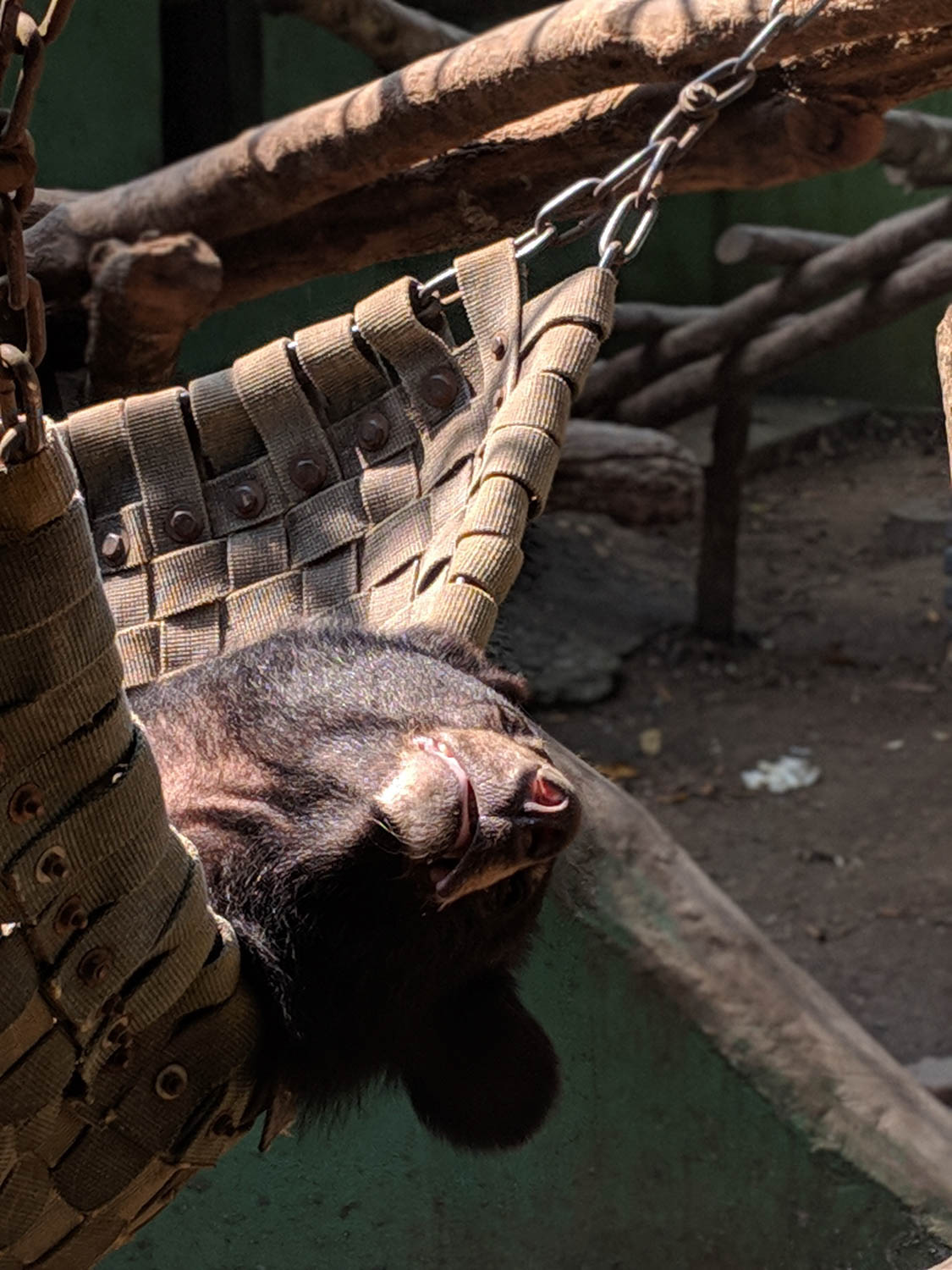
You may see more nature than you’d prefer though, so be sure to stay on the pathways:
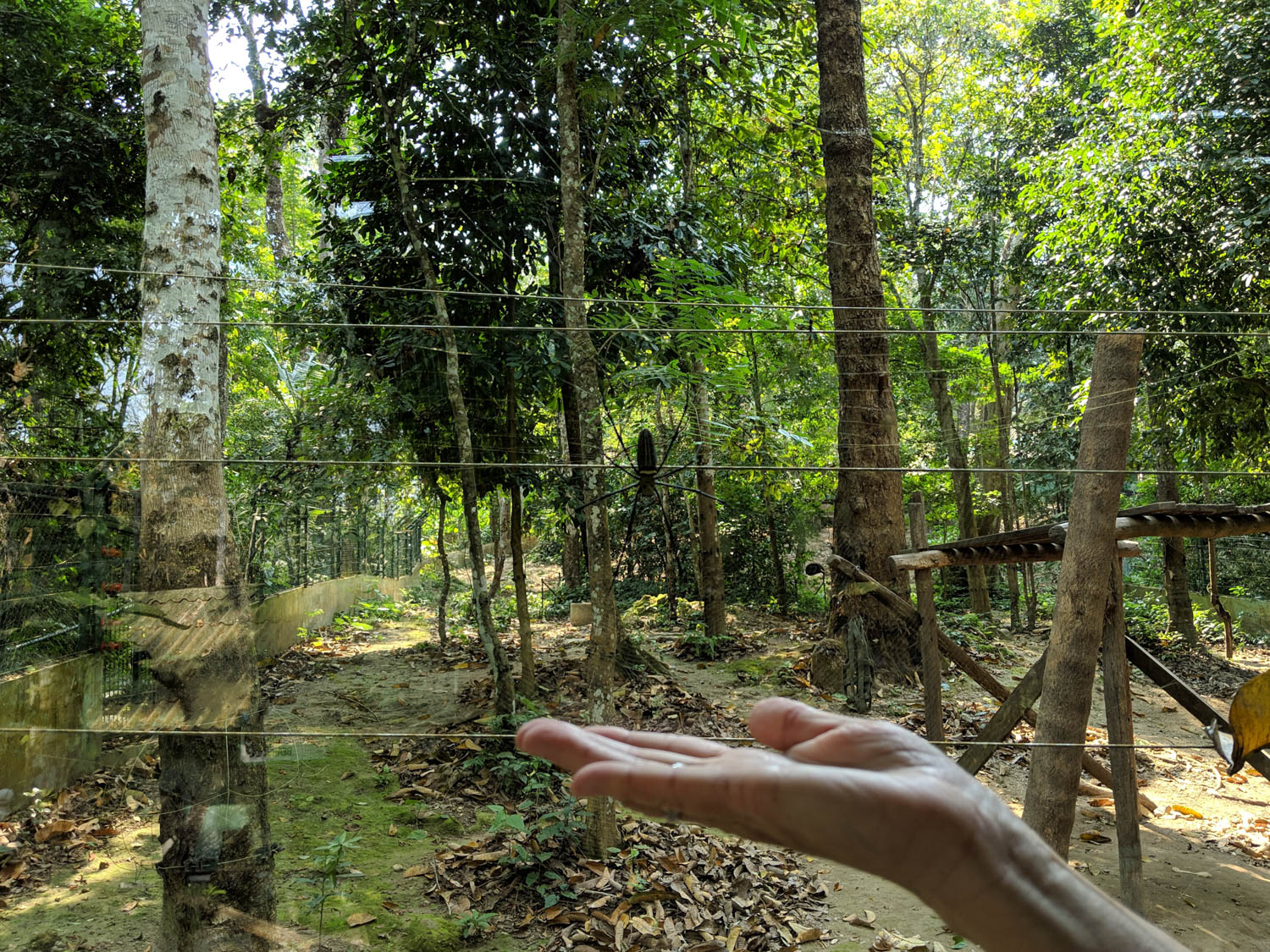
If you’re mostly hoping to swim, I’d suggest cutting over to pathway “B” right after the bear sanctuary. This side of the river is less crowded, and has easier access if you want to get in the water:

Regardless of which approach you take, I think this is an enjoyable way to spend a day or half day. And there are tons of similar places around Luang Prabang, so if this is something you enjoy, be sure to take time to seek out the less-accessible areas as well.
4) Support local farmers at the Laos Buffalo Dairy
I know. Not everyone wants to go to a farm on vacation (if only because it can complicate your customs experience when returning home), but if you do go out to the Kuang Si falls, at least stop here for ice cream or coffee on the way back to Luang Prabang.
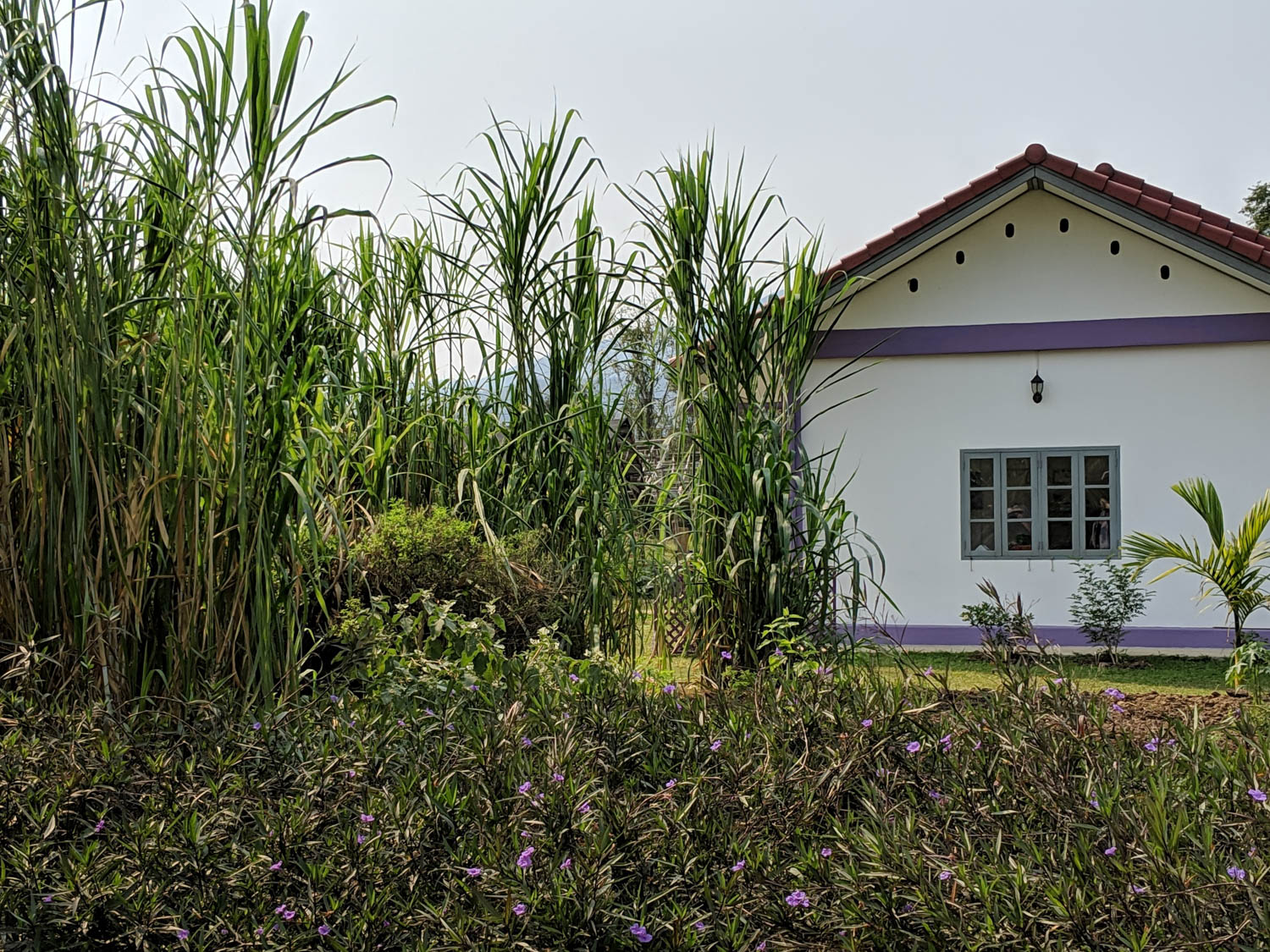
The Laos Buffalo Dairy was started by two couples, one Australian, and one American, after they fell in love with Laos on vacation and decided to take a hiatus from their jobs to spend a year or two in Laos working with locals to establish a little company to produce yogurt and cheeses that could be sold to hotels in the area. A bit of a passion project that would add value to the local economy.
They got much more than they bargained for, however. Turns out there was no dairy industry in Laos at all. The traditional animal husbandry skills that would have included milking water buffalo (and which are depicted in some of the temple mosaics dating back a thousand years), had pretty much been lost, or at least weren’t being practiced.
Rather than giving up on the idea, they decided to take a step back, and create something to help revitalize the local agriculture. As the Australian co-owner exclaimed:
Welcome to what a mid-life crisis looks like! Some people buy a sports car, I somehow managed to quit my job, sell my house, and move my entire family to Laos.
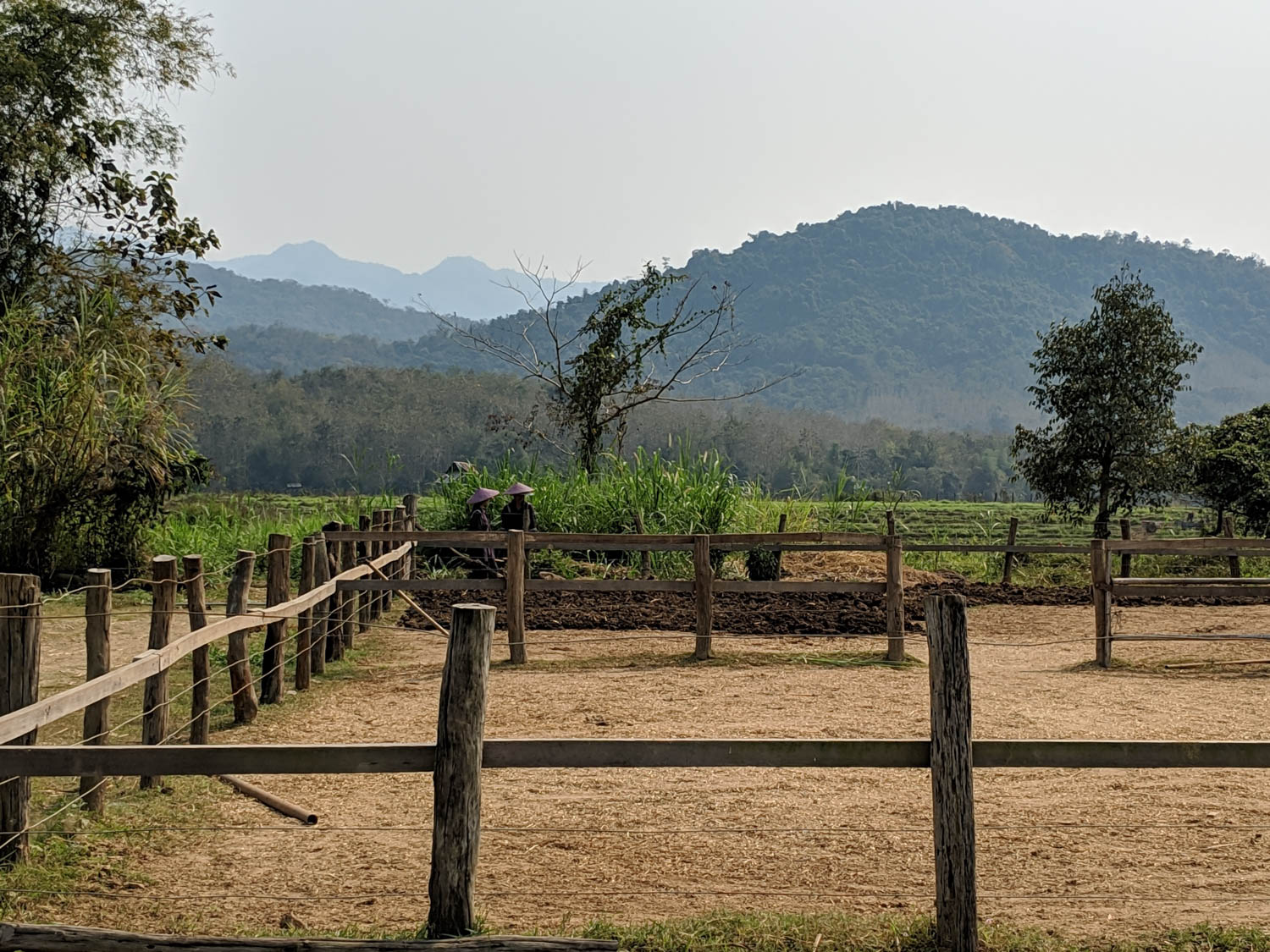
So the Laos Buffalo Dairy rents pregnant water buffalo from local farmers. They ensure the cows are getting proper prenatal nutrition and medical care, help with calving, then keep the cows and calves on-site for a few months to ensure the babies are healthy and vaccinated.
The extra milk collected from the cows is in fact made into ice cream and other products sold to Luang Prabang hotels, and the farmers receive a fee each month their buffalo are at the dairy.
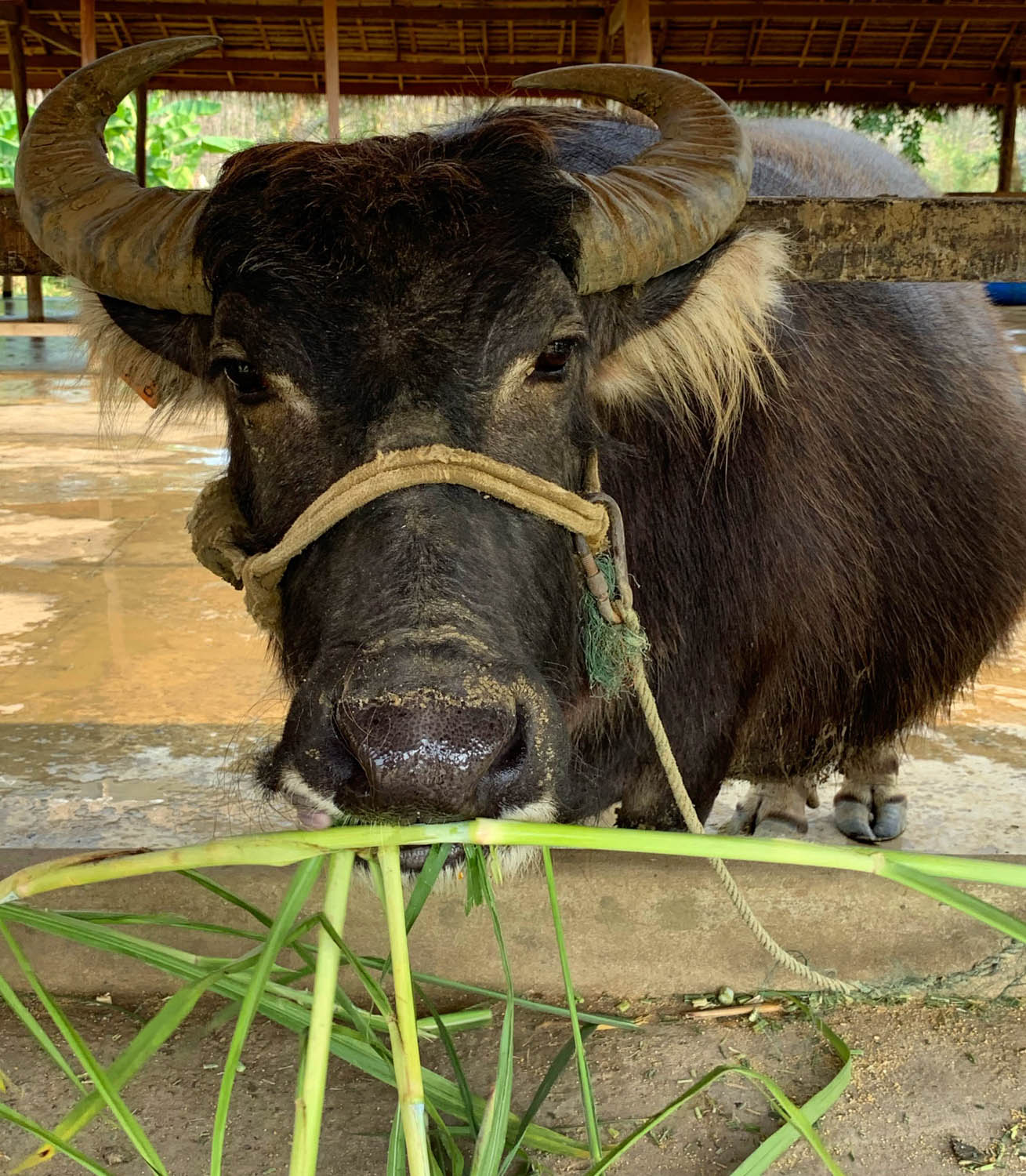
At the same time, the dairy offers classes and instruction to all the participating farmers (there are hundreds of buffalo from almost 20 different villages involved now). This goes beyond buffalo, so the dairy has chicken and rabbits and little piglets as well.

Previously up to 50% of buffalo calves born in the villages didn’t make it to maturity, and while male buffalo are sold for meat, there wasn’t much of a focus on the general health of the livestock (or even a reasonable way for most of these impoverished farmers to provide more than basic care for their animals).
So what would be a minuscule operation in a more developed country is having an outsized impact here.
You can purchase products made by the Laos Buffalo Dairy at several hotels in Luang Prabang, along with the Saffron coffee shop, so that’s a way to lend support without trekking out to the farm.
But if you’re in the area, I’d highly recommend stopping by. We thought it was tremendously educational, even on a short visit, and it gave us hope that there were some industries being created in Laos beyond just churning tourists in and out.
Plus, you can bottle feed a baby buffalo, which is just not one of those opportunities that comes along very often.

5) Do some responsibly-sourced shopping
It will come as no surprise at this point to hear that I didn’t particularly love the Luang Prabang Night Market.
I mean, it was fine as far as Night Markets go, but it was crowded with tourists to the point where I felt like sushi on a conveyor belt, getting pushed past endless rows of mass-produced goods. There were certainly gems amongst the chaff, and the women running the various stalls were extremely kind and friendly, but there really weren’t many unique products to be found.
As a side note, the people raving about “buffet street” and the food in the Luang Prabang Night Market are most likely the backpacker crowd. I love street food, and often prefer it to restaurant dining, but this setup violated pretty much all street food precepts (no steam, no queues, no locals), so is probably best avoided.

So I’d suggest enjoying one of Luang Prabang’s many great restaurants instead, and doing some shopping during the day at one of the places in town committed to locally-sourced and sustainable products.
While the handicrafts aren’t my personal style, for example, the Ock Pop Tok shop has a living crafts center in addition to their shops in town, and showcases a variety of materials and techniques of local Lao artisans.
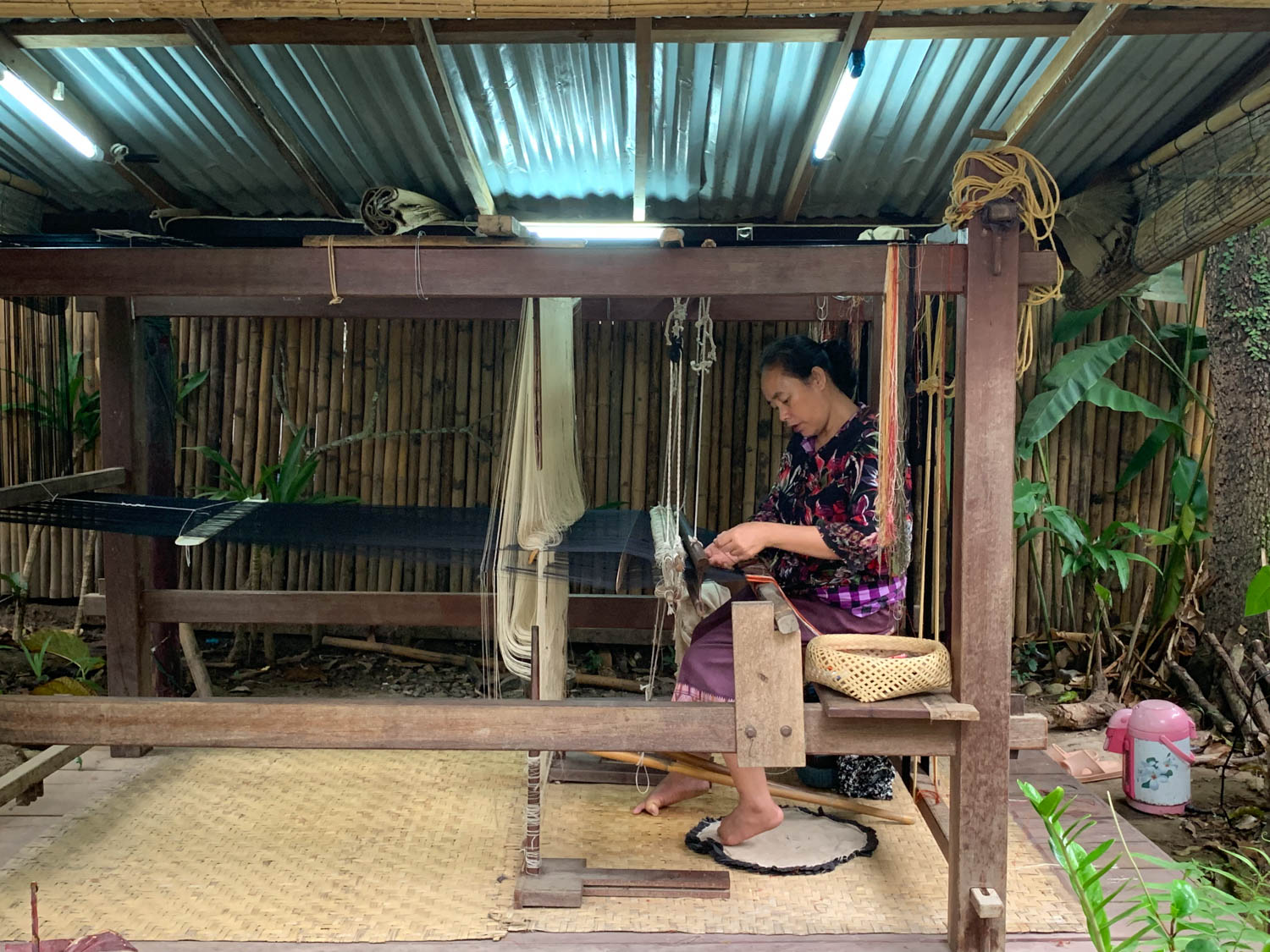
I did purchase a couple of oil paintings, done on traditional sa paper (I’d show you pictures of them, but they’re off being framed). While the night market had some things done in a similar style, these were painted by the same ladies who were selling them, and I felt the artistry was a bit better. They’re usually set up along the river bank, across from the Victoria Xiengthong Palace, for those interested.
6) Step into a historic home
We came across this almost by accident, as we cut through an alleyway on a walk through town.
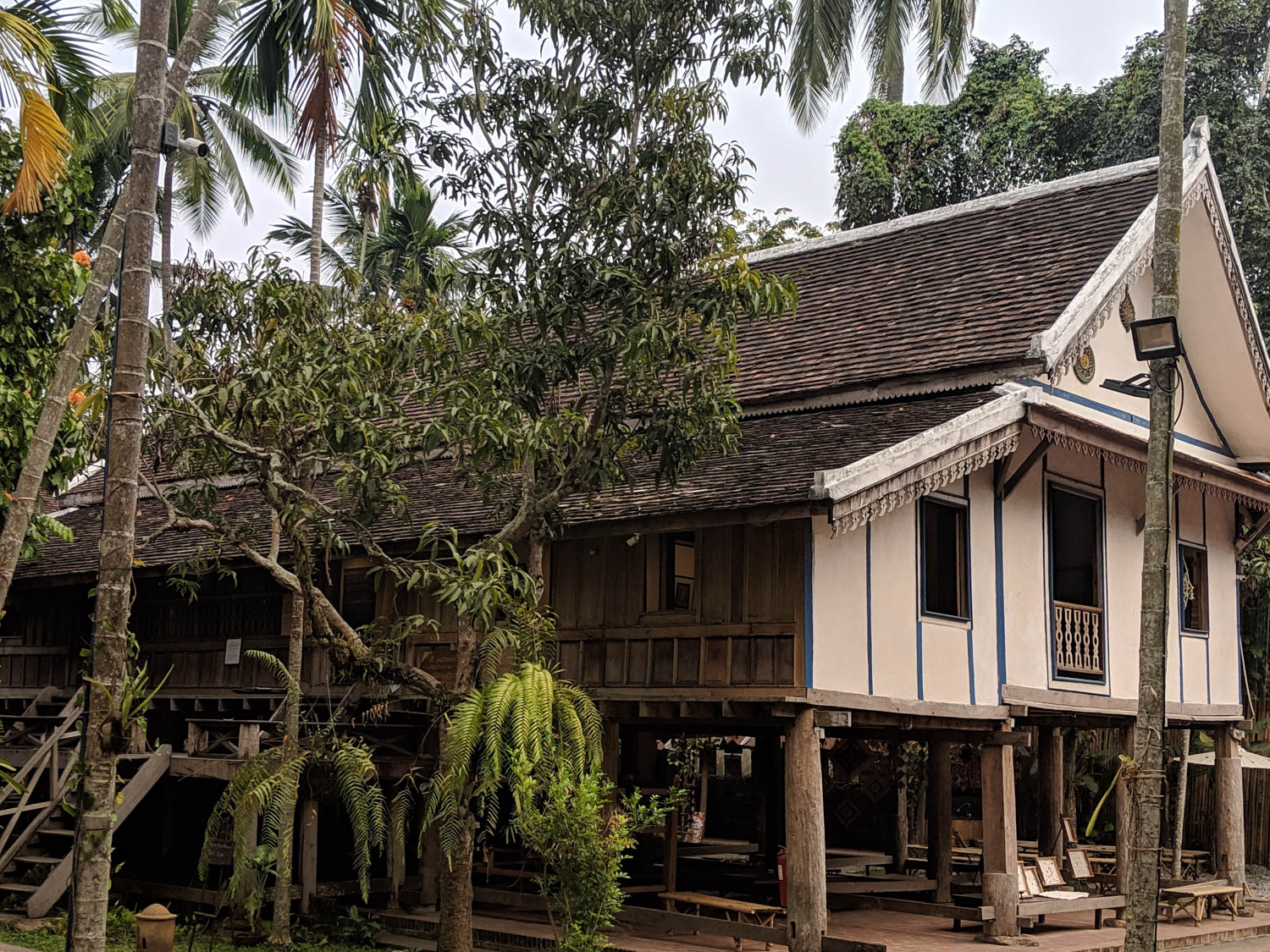
The Heuan Chan Heritage Center is an old house, converted into a museum, with the surrounding gardens used for classes, cultural activities, cooking workshops, and so forth.
You can explore the grounds for free, but there are costs for the various scheduled activities. Visiting the museum (which I’d recommend, as it provided a good, if shallow, baseline background of pre-Colonial Lao culture) is less than $2. There’s a cute little coffee shop as well, so this is a nice stopping point to get out of the heat, if nothing else.
7) Cook with a local family
We didn’t actually do this, which I’m kicking myself over, but Mike did this with his family, and has raved about the experience.
While there are several cooking classes and schools in Luang Prabang, Traveling Spoon is a very home-spun operation run by a former monk, his wife, and his mother our of their rural home. Literally, you’re joining them in their home, using their outdoor kitchen, and interacting with their family.

It’s worth noting that while this about as intimate of an experience as you can have as a tourist to a place, it won’t be for everyone. The village is extremely poor, and while Si and his family have more resources than some of their neighbors, it’s a very humble home, without western plumbing, or other luxuries.
Which is part of what made it such a unique experience, and Mike’s daughters are still talking about it.
Overall thoughts
Laos is incredible, and Luang Prabang is a beautiful town, that sadly seems to have more tourism than it can sustainably handle. I hope the local community decides it’s worth the effort to enforce some restrictions, particularly where the dawn processional is concerned, because it’s heartbreaking to see the abusive approach some people are taking.
Of course, it’s a tricky balance, as doing things like charging a fee to enter the historic center or banning tour guides from setting up viewing areas on the streets could have a negative economic impact. Obviously Luang Prabang (and Laos in general) isn’t the only place dealing with challenges like these, but it is inspiring to see so many groups focused on changing the course before the things that make the culture unique are lost.
In the meantime, I’d encourage anyone visiting Luang Prabang to enjoy the town, and everything it has to offer, but to also make an effort to engage in activities that support, rather than exploit, the local culture. If you can make time to escape into the countryside, where the larger tour groups rarely venture, you’ll have even more opportunity to really get to know the place and the people, both of which are truly wonderful.
Have you been to Luang Prabang? What other things would you recommend?
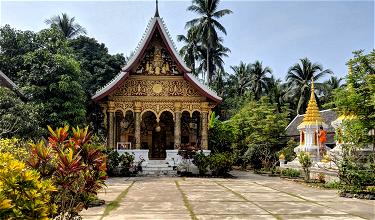
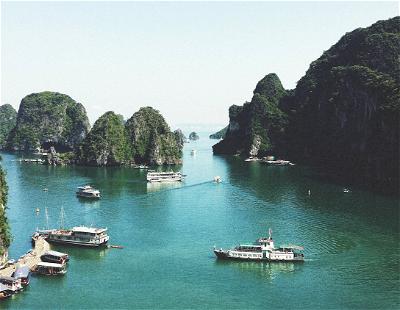

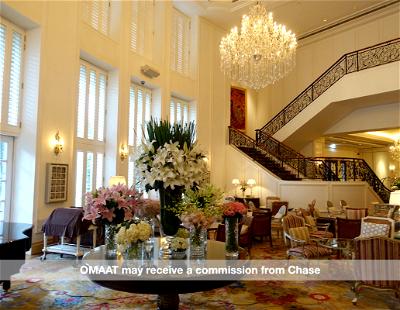
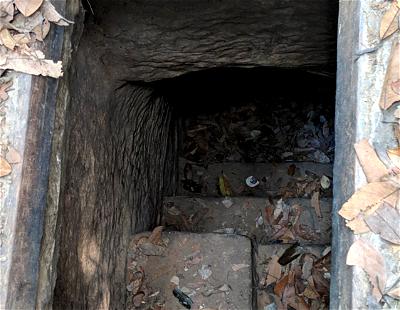
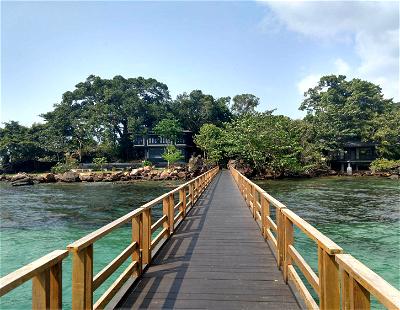


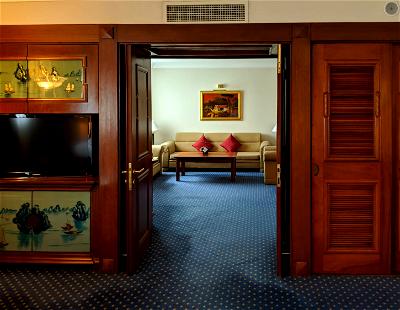

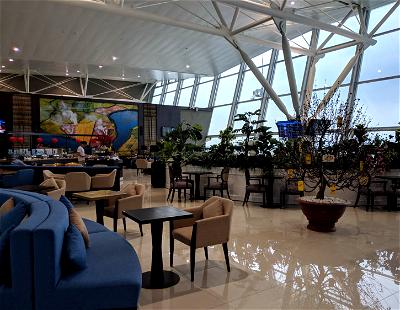


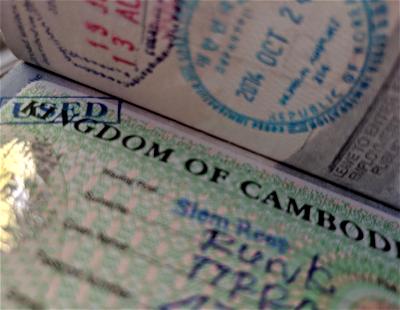

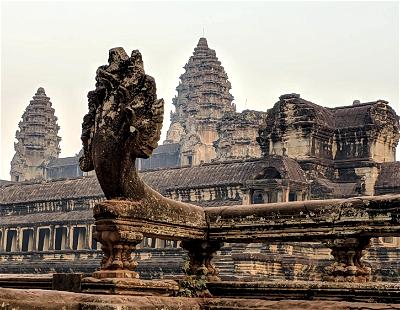
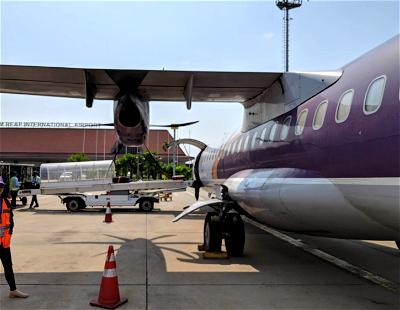
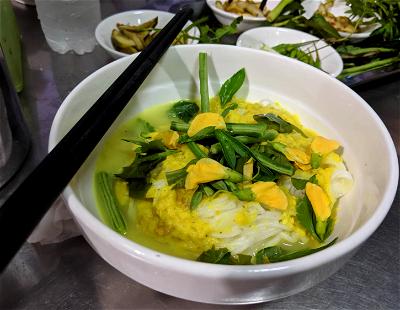
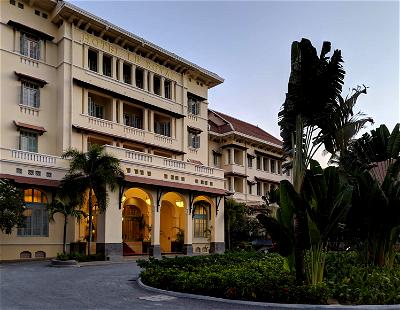
^ each "morning"
I went to LP last Feb and absolutely loved it. I witnessed the real alms procession each month and made a map (click on my name) of where to see and where to avoid. Curious how it compares to where you saw it, Tiffany.
All this is a *political* issue, and I am amazed that it is not mentioned in the discussions here that all of this is the Lao government's culpability here. It would, as elsewhere, be no problem to stop tourists from invading and upsetting the alms ceremony, or local guides to exploit that (although I understand that a little bit better), be them - in hierarchy of intrusion - Mainland groups, backpackers from OECD, and European...
All this is a *political* issue, and I am amazed that it is not mentioned in the discussions here that all of this is the Lao government's culpability here. It would, as elsewhere, be no problem to stop tourists from invading and upsetting the alms ceremony, or local guides to exploit that (although I understand that a little bit better), be them - in hierarchy of intrusion - Mainland groups, backpackers from OECD, and European retired schoolteacher types. But the Lao government, the last (pseudo-) Leninists left, uses the country solely to extract as much money as they can for personal family use - like Cambodia, but more distributed and even worse as there is no interest in development at all. Laos is the only country in SEA with economic indicators on the level of Subsaharan Africa. And LP is the main tourist cash cow for the, again, only land-locked and hence beach free country in Indochina.
And by the way, to talk about tourist season or peak season regarding LP in 2019 as in some of the comments is nonsensical, as about tourist activities. The latter are the point of LP, and to stay at a luxury resort of some army/party crony and then take the ferry across the river and feel like a responsible ecotraveller is just bizarre, and there is no low season in LP anymore.
Good discussion here. In addition to LP I also spent some time in southern Laos on a Mekong cruise on a very small boat (12 cabins or so total) that was very quiet (https://www.vatphou.com/). Great scenery. Then I spent a couple of days touring around the Bolaven Plateau. More beautiful scenery. Some great waterfalls. It all felt very unspoiled and like it should be an ecotourism destination. But I don't doubt that all of those...
Good discussion here. In addition to LP I also spent some time in southern Laos on a Mekong cruise on a very small boat (12 cabins or so total) that was very quiet (https://www.vatphou.com/). Great scenery. Then I spent a couple of days touring around the Bolaven Plateau. More beautiful scenery. Some great waterfalls. It all felt very unspoiled and like it should be an ecotourism destination. But I don't doubt that all of those beautiful forests will get cut down eventually. Laos is a poor country. They need to generate income somehow. So they've chosen hydropower and apparently to sell off their country to the Chinese. Part of the issue is corruption but there are also wider problems.
I visited the buffalo dairy and - sadly - think the animals are being abused and mistreated.
We took a tour and witnessed a “vet” kick a buffalo to force her into a holding pen. A senior buffalo with a leg injury (they were honest about) was bleeding in multiple places. I pretended to pat him to look closer and he had holes all over him similar to the holes and bleeding that occurs...
I visited the buffalo dairy and - sadly - think the animals are being abused and mistreated.
We took a tour and witnessed a “vet” kick a buffalo to force her into a holding pen. A senior buffalo with a leg injury (they were honest about) was bleeding in multiple places. I pretended to pat him to look closer and he had holes all over him similar to the holes and bleeding that occurs with elephants and bull hooks.
There were multiple buffalo that had these injuries so I do not think it was from broken glass or rolling on something. I also witnessed them being hit and kicked in the distance in a closed off area.
I felt ashamed and sick for the rest of the day.
I love Luang Prabang and agree that it's becoming increasingly touristy (my opinion after 2 visits). That said, it does not even come close to anywhere in Thailand or Siem Reap, which are sadly just mucky with the worst aspects of cheap tourism and globalism these days. I think Hanoi is undergoing a similar evolution as well, but obviously it's incomparable in terms of scale.
Hotels like the Rosewood in LP are doing a...
I love Luang Prabang and agree that it's becoming increasingly touristy (my opinion after 2 visits). That said, it does not even come close to anywhere in Thailand or Siem Reap, which are sadly just mucky with the worst aspects of cheap tourism and globalism these days. I think Hanoi is undergoing a similar evolution as well, but obviously it's incomparable in terms of scale.
Hotels like the Rosewood in LP are doing a lot to maintain the integrity of the town and Laos generally. Sourcing local foods, integrating the local community for a wide range of jobs, and even for alms, taking hotel guests to a neighboring village in order to see something a bit more authentic.
Despite LP's fast development, though, there is still a lot lacking when compared to Cambodia but especially Thailand, in terms of medical care etc.
I would love to go back to LP sometime soon!
I was lucky enough to visit Laos a few years ago and loved it, along with Luang Prabang. The alms ceremony was touristy, but everything else was nice.
I did shop at the ock store and I took some classes on weaving through a local company that is paid directly to the weaver.
I also echo comments about Big Brother Mouse, great organization, and, even if you can't help with English, you can...
I was lucky enough to visit Laos a few years ago and loved it, along with Luang Prabang. The alms ceremony was touristy, but everything else was nice.
I did shop at the ock store and I took some classes on weaving through a local company that is paid directly to the weaver.
I also echo comments about Big Brother Mouse, great organization, and, even if you can't help with English, you can purchase books in English and Laotion to take home or donate.
The town library has an exchange of English books and some girls from villages live in a small shop that sells books and souvenirs to earn money for school.
I found Laos much less touristy than other countries so its sad to hear that there has been a change as it is a country I would love to go back to.
Hi,
Some of us visit a place such as Laos, Luang Prabang to get something for the coffee table to show others (my NYC friends).
Others visit such places for spirituality, which of course Luang Prabang has for centuries and is endearing.
Others like us have had past lives there and we are drawn to visit and reconnect which includes
our spirituality.
Our last visit we found that it is...
Hi,
Some of us visit a place such as Laos, Luang Prabang to get something for the coffee table to show others (my NYC friends).
Others visit such places for spirituality, which of course Luang Prabang has for centuries and is endearing.
Others like us have had past lives there and we are drawn to visit and reconnect which includes
our spirituality.
Our last visit we found that it is indeed developing rapidly for tourism and the people from China were coming in to purchase stores and real estate. Much of the stone and local items were being manufactured in China and smuggled in to sell.
Of course we wanted to see the locals benefit but they said they don't have the capital to compete. So thats a government issue for Laos to protect its own people.
Hopefully the government will help its people.
We bought from those sellers on the street market. And we left prayers for them at the Temples.
Tim
@Bill @Forlorn
As a Chinese (mainland) I agree with you 100%.As an individual I should apologize about this but there is nothing I could do.Unfortunately a lot of Chinese enjoy this very much.
There is also an incredibly interesting unexploded ordinance museum in Luang Prabang. When we went, we were the only people there, but it explained to an extent why Laos is so poverty stricken. One interesting fact that I didn't know before hand was that more bombs were dropped on Laos than any other country during the Vietnamese War.
While I love your posts in general, this post is somewhat like going to Venice (or any where in Italy for that matter) in August and then complaining about the crowds and bad tourist behavior. Tourism is up exponentially in the last 20 years. The golden rule is to not visit SE Asia in winter and Europe in summer. We visited Laos a few summers ago, and LP wasn't crowded at all and you barely...
While I love your posts in general, this post is somewhat like going to Venice (or any where in Italy for that matter) in August and then complaining about the crowds and bad tourist behavior. Tourism is up exponentially in the last 20 years. The golden rule is to not visit SE Asia in winter and Europe in summer. We visited Laos a few summers ago, and LP wasn't crowded at all and you barely saw anyone else in Northern Laos. Completely opposite your 3 day experience. We also didn't go 'watch' the alms giving - even at a respectful distance. You did the most touristy things in high season. If you had ventured anywhere but LP or VV, your experience would have been quite different.
Unfortunately, the Chinese are doing the same thing in Cambodia. Buying up everything they can. Lining the pockets of the corrupt system. Turning Cambodia into a satellite state
This is dismaying to read. I was planning a trip there in the fall. Would Siem Reap be better? I always thought LP was much more relaxed and less visited the SR.
@ Josh -- No, definitely not.
We visited in March 2019 and there are certainly some lovely hotels , many foreign owned , with foreign managers and not cheap . Seem to be 5 star prices but do not have 5 star services .
We had heard about the situation with the monks in the early morning ,so we stayed away . We have seen similar in Thailand, it is nothing different in Laos .
We found main street...
We visited in March 2019 and there are certainly some lovely hotels , many foreign owned , with foreign managers and not cheap . Seem to be 5 star prices but do not have 5 star services .
We had heard about the situation with the monks in the early morning ,so we stayed away . We have seen similar in Thailand, it is nothing different in Laos .
We found main street Luang Prabang awful, too touristic with cake shops , coffee shops, hamburgers, pasta and pizza restaurants , and high prices compared to other parts of Laos .
Very few serving traditional Laos food.
You have to walk outside main area to find smaller local restaurants .
We met a lovely Indian who runs a small Indian restaurant on the river bank called CHENNAI, he has been in Laos for many years and said that outsiders have bought all the main street property and charge traders and restaurants high rents so he has difficulty making money . A friend who visited 6 years ago was appauled by what we told him , it has definitely changed . We have not been to Vientiane but have been recommended to go there , instead of LP .
@Brandmeeting -- Yes, the railway is just one of China's multi-billion-dollar projects. Here's an article on their "debt diplomacy": https://www.ucanews.com/news/little-laos-struggles-to-swallow-chinese-debt/84781 (the Chinese get a lien on the country's mineral wealth).
A beautifully-penned review, Tiffany. Would love to see pics of the paintings you bought after they’re framed.
our travel agent (Exotic Adventures of Hanoi) booked us an excursion that took us by motorboat up the Nan Kham river to Tat Sae waterfall (not as nice s then a kayak trip down each with a guide down the Nan Kham river. Was beautiful unspoiled scenery, and a gorgeous day on the clean clear river upstream from town. Also our trip to Kwang si waterfall was done on foot from lower down which included...
our travel agent (Exotic Adventures of Hanoi) booked us an excursion that took us by motorboat up the Nan Kham river to Tat Sae waterfall (not as nice s then a kayak trip down each with a guide down the Nan Kham river. Was beautiful unspoiled scenery, and a gorgeous day on the clean clear river upstream from town. Also our trip to Kwang si waterfall was done on foot from lower down which included a walk through rolling farm plots and a Village where we were escorted by village elders through their tribal lands nd trails to the park and met the delightful children just getting. Out of school. A mild uphill trek but great to experience the local village as well as the natural surroundings coming to the falls. Highly recommended!! Apparently the trail is not open to the public but is made available by agreement, so we had the trail all to ourselves with our local guide and the village escorts. A great idea to see the country and village life and also support the local tribe.
I have family in Laos. I've only visited Vientiane. I visited in 2010, 2015, & 2018. It is striking and disturbing how much has changed in those years. It is absolutely true that China owns Laos. It's depressing as hell. Every single person in Laos knows it. It's why there's a train line being built. It's why the Mekong is being dammed like hell in Laos and ruining the entire Mekong ecosystem from Laos to...
I have family in Laos. I've only visited Vientiane. I visited in 2010, 2015, & 2018. It is striking and disturbing how much has changed in those years. It is absolutely true that China owns Laos. It's depressing as hell. Every single person in Laos knows it. It's why there's a train line being built. It's why the Mekong is being dammed like hell in Laos and ruining the entire Mekong ecosystem from Laos to bottom of Vietnam where the river ends. Laos has been unbelievably poor. It's understandable to not turn away from shiny money. But at the same time, the Laotian government has no spine. It never has. It never will. They're not like the Thai or Vietnamese government who are willing to push back against China. The beauty of Laos was lost 5 years ago. It's gone. It will never ever ever come back. I guarantee you that. There are only 800 elephants in the entire country based on a government census. The motto of Laos was the Land of a Million Elephants. All of the trees and land have been and are being logged for the Chinese paper industry. By the time the Laotian government reacts and responds, it will be way way beyond too late. Once you get a taste or an idea of what Laos was, it is heartbreaking and bittersweet to go there now.
We were there 3 years ago and it feels like a lot has changed already, this was sad to read.
I think LPB should reach out and learn perhaps from their neighbours about how to handle tourism at a larger scale.
Individualistic and selfishness of humans will always ruin everything.
Good write though x
The tourist effect on Luang Prabang is the same as in just about all popular small towns everywhere. No big surprise. Go in low season when things are not so overwhelmed. Do things most tourists don't do like take hikes and bike tours or even explore the Nam Khan and Mekong in a small "canoe." Tourists, though, don't know how and are unwilling to act like locals.
I agree with Greg about Tad Tse...
The tourist effect on Luang Prabang is the same as in just about all popular small towns everywhere. No big surprise. Go in low season when things are not so overwhelmed. Do things most tourists don't do like take hikes and bike tours or even explore the Nam Khan and Mekong in a small "canoe." Tourists, though, don't know how and are unwilling to act like locals.
I agree with Greg about Tad Tse Falls versus Kuang Si Falls. Tad Tse is more of a locals hangout. At either dress modestly - skimpy swimwear is offensive.
Respect is important. But the observer effect states that all observation, tourism in this case, alters the object being observed.
Hate to break it to you but Laos isn't going back to the old ways. There is a high speed railway that is going to open around 2021 connecting China to Laos and once that happens the chinese are going overrun laos. Already in certain parts of laos the chinese have come in and bought up property and even denied access to the local population. I get what you are saying but the future looks...
Hate to break it to you but Laos isn't going back to the old ways. There is a high speed railway that is going to open around 2021 connecting China to Laos and once that happens the chinese are going overrun laos. Already in certain parts of laos the chinese have come in and bought up property and even denied access to the local population. I get what you are saying but the future looks incredibly bleak for laos especially with the number of chinese tourists increasing drastically every year. Think it was up 17% in 2018. Once that rail is in place their influence on laos will be overwhelming.
I visited numerous times in the 1980s. Individual tourism were not permitted and there were very few small group tours. It was like North Korea in that regard. I entered on development project visas. There was very little infrastructure, electricity was unreliable, at best; paved roads were rare, including in major towns and cities; hotels were basic; air transport was beyond scary. I’m not keen on those privations but I did love the country and...
I visited numerous times in the 1980s. Individual tourism were not permitted and there were very few small group tours. It was like North Korea in that regard. I entered on development project visas. There was very little infrastructure, electricity was unreliable, at best; paved roads were rare, including in major towns and cities; hotels were basic; air transport was beyond scary. I’m not keen on those privations but I did love the country and the people ( and the decorative arts/antiques,mostly of Chinese origin, available to buy ).
Went in 2006, and again in 2009. Was great back then. You could tell it was going to turn into a sh**show though.
Luangpraband and Vang Vieng.
"Luang Prabang has become a tourism focal point well beyond the capacity of the town’s natural footprint."
Yes 100% true. I visited there in 2002 -- that is 17 years ago -- and even then it was clear the town was almost at the boundary of what could be considered sustainable tourism. And even some of the nearby villages were already in full "tourism exploitation" mode.
So yeah your insights come as no surprise...
"Luang Prabang has become a tourism focal point well beyond the capacity of the town’s natural footprint."
Yes 100% true. I visited there in 2002 -- that is 17 years ago -- and even then it was clear the town was almost at the boundary of what could be considered sustainable tourism. And even some of the nearby villages were already in full "tourism exploitation" mode.
So yeah your insights come as no surprise ... sadly e.g. Instagram has doomed a lot of nice places all over Asia
Having been to Thailand extensively for work, work/vacation, and vacation, how would you say you'd rank Laos on the gay-friendly spectrum comparatively? My partner and I were tossing this around as a honeymoon idea because we'd like to do something "cultural" and he's never been to SE Asia.
Also, @Greg: Great recommendations on ways to help where we can aside from spending tourist dollars/yen/yuan/whatever. Especially about donating blood...something few people would ever remotely consider. Bravo!
Having been to Thailand extensively for work, work/vacation, and vacation, how would you say you'd rank Laos on the gay-friendly spectrum comparatively? My partner and I were tossing this around as a honeymoon idea because we'd like to do something "cultural" and he's never been to SE Asia.
Also, @Greg: Great recommendations on ways to help where we can aside from spending tourist dollars/yen/yuan/whatever. Especially about donating blood...something few people would ever remotely consider. Bravo!
@AdamR -- LPQ, at least, is so heavily frequented by the all kinds of people that I don't think you'd even raise eyebrows. Ben and Ford went a few years ago, and had no issues.
I was disappointed to read this. I visited Luang Prabang 5 years ago, and other than the alms ceremony, it wasn't particularly touristy. WOW things have changed in a short amount of time. I always told myself I'd return because I loved it so much but now I'd be a little hesitant to ruin a perfect memory. Hope they can put some controls in place before it gets worse.
The "Tree Alliance" has a small chain of restaurants in Laos, Cambodia, and Thailand that help underprivileged kids learn a trade and make a living. The food is also delicious. Among the best meals we had in Cambodia and Laos during a recent trip. You can eat well and give back at the same time.
http://tree-alliance.org/our-restaurants/khaiphaen.php
@Malc
It is the Chinese who are building the train and, obviously, paying for it. It is an enormous project.
Tourists behave the way they do because there are no rules and regulations in place.
The Luang Prabang "zoo" can easily be rectified by making certain behavior illegal. If you do it anyway you would end up in jail.
Overcrowding can be handled by imposing a maximum on the number of tourists, or make the place much more expensive so fewer will visit (increase visa costs to e.g. $500).
Very sad. it was still a special and quiet experience when I was there in 2010. I was wondering how things would turn out there - you could tell it was just about to explode from a tourist perspective. sounds like it definitely has.
@Tiffany -- I kind of got that impression of LP without having gone there, and you confirmed it (I know some people do love it but I've come across others who found it underwhelming). It sounds a bit like Ubud, Bali, which goes out of its way to appear natural but is really Disneyfied hippiedom (I do, however, adore the resort I regularly stay at outside of town).
I found your remarks on the...
@Tiffany -- I kind of got that impression of LP without having gone there, and you confirmed it (I know some people do love it but I've come across others who found it underwhelming). It sounds a bit like Ubud, Bali, which goes out of its way to appear natural but is really Disneyfied hippiedom (I do, however, adore the resort I regularly stay at outside of town).
I found your remarks on the dairy farm very interesting.
One thing I don't think you mentioned at any point is China. One of my two closest friends lives in Laos, and I get the impression from him that China has pretty much bought Laos.
It is pretty easy to see lots of great things in LPB, and yes the circus-y aspects are circus-y (as they are everywhere in the world when something has a large number of tourists willing to spend money). But they are also lower key and less in-your-face than anywhere I have traveled.
Tat SE, the other waterfall is even prettier than Kuang Si, but less visited because there isn't as much it her activity...
It is pretty easy to see lots of great things in LPB, and yes the circus-y aspects are circus-y (as they are everywhere in the world when something has a large number of tourists willing to spend money). But they are also lower key and less in-your-face than anywhere I have traveled.
Tat SE, the other waterfall is even prettier than Kuang Si, but less visited because there isn't as much it her activity around there.
I probably shouldn't even mention this, but monks do alms-giving in every single neighborhood (Ban) in Luang Prabang. It isn't as visually dramatic outside the town center because most of the temples (and hence most of the novices and monks) are "downtown", but if you want a more authentic and quiet alms giving, you can do that. Meet someone or talk to your guesthouse people and see what is available.
The buffet street is nasty. There is so much good food elsewhere, just don't bother.
I agree with most of the recommendations, but the tone is a bit dire.
Also donate blood while in Laos. There area lot of kids with a blood disorder called thalassemia who rely on regular transfusions to stay alive. Red cross or Lao Friends Hospital "Friends Gallery" can give you details. It is safe and clean, and you get a t-shirt that you'll wear much more proudly than a silly BeerLao shirt from the night market.
I enjoyed my time in Luang Prabang. They are building a train through Laos from Thailand to China so it’s going to get even more touristy.
I took a 4 day motorcycle tour through the Laos boondocks with a Welsh man that lives in Kesi that was very interesting.
and I couldn't agree more about the alms-giving circus. It is sad and disgusting. Same thing in Mandalay where the monks' procession at lunch has been turned into a tourist attraction. People don't know how to behave and it reduces people to animals in a zoo. It's terrible. I felt dirty just for being there.
Kuang Si is amazing. The most beautiful waterfall complex I have been to - and I have been to many.
Another great local organization is Big Brother Mouse which publishes books in local languages to get kids reading for pleasure and just to teach them to read in the first place. They have an office in town where you can help the staff and local students practice their English. They also have a school called...
Kuang Si is amazing. The most beautiful waterfall complex I have been to - and I have been to many.
Another great local organization is Big Brother Mouse which publishes books in local languages to get kids reading for pleasure and just to teach them to read in the first place. They have an office in town where you can help the staff and local students practice their English. They also have a school called Big Sister Mouse a short distance out of town. They are doing amazing work.